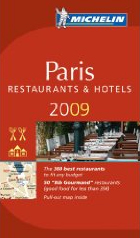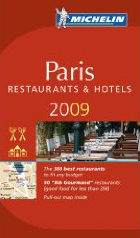It took years for Henri to be noticed and recognized. The man had no formal art training painted strange pictures of jungles, animals and portraits. A Sunday painter at best, at age forty he obtained permission to copy paintings and sketch in the National museums of Paris. His work in the Salon des Independents exposed him to avant-garde art and he was soon seen as an innovator of Surrealist painting. His exotic gardens were copies of the Jardins des Plantes and the Botanical Gardens. There he did pictures of monkeys, buffalo and tigers deep in green foliage. Often the animals grouped together were from different continents.
His technique was odd. He would start at the top and work his way down, using one color at a time. They were hardly realistic, but through a series of circumstances his work caught the eye of other artists. His admirers or friends included Degas, Braque, Gauguin and, of course Picasso and his gang which included Cocteau, and Apollinaire. He would seek out Bougereau for advice. His early years in Paris were filled with giving elocution, violin and art lessons. At various times he lived on Rue de Sevres, Avenue de Maine and Rue Vercingetorix. He finally settled at 2, bis, Rue Perrel in a single room that backed on the railway tracks of the Garre Montparnasse.
He sold very few of his rather stiff paintings and received very little for what he sold. There was very little perspective and his colors were flat. But Montparnasse circles became interested in Rousseau, especially Robert Delaunay and Picasso.
Guillaume Apollinaire wrote about him and pointed out how Rousseau was constantly ridiculed. His painting at the Fauve Salon in 1905 caused a scandal where the artist was accused of assassinating Impressionism. People were drawn to him and from him. This was a cue for the dealer Ambroise Vollard to begin snapping up Rousseau’s works. His works were considered avant-garde and Delaunay’s mother commissioned his Snake Charmer.
He was being slowly sought out and, like Gertrude Stein, he began organizing family and artistic evenings where big name artists and local merchants rubber shoulder. There might be a music recital when he played his violin or Braque would play his accordion or a poetry reading with
Apollinaire performing center stage. Rousseau, always simple, served aperitifs and cookies.
In 1908, Picasso threw a party which became known as The Rousseau Banquet and held at The Bateau Lavoire on Rue Ravignan. It was half serious and half burlesque. But for Rousseau, who was the center of attention, it was a great personal success and acceptance. With Rousseau’s Portrait of a Woman in full view, Rousseau was seated on a make-shift thrown while a raucous party took place. Apollinaire was there with the artist, Marie Laurencin. He wrote a poem on a napkin and recited it to Rousseau’s glee.
“You recall, Rousseau, the Aztec landscape the forests where mango and pineapple grow. Where monkeys spill red blood of the pastecos And the fair-haired Emperor was harried and slain? The pictures that you painted you captured in Mexico- Red sun and green banana leaves Hereafter the brave soldier’s uniform, Rousseau’s You changed for the Douanier’s upright blue.”
Rousseau probably never was in Mexico and not in the army. But the mockery was all in fun.
Picasso stood on a chair. He announced that the banquet was officially started. Andre Salmon, Picsasso’s poet friend stood on a bench and recited, Ode to Rousseau”
“We are gathered to celebrate your fame And so let us drink the wine Picasso is pouringTo honor you, for it is time to drink itCrying all in chorus, Long Live! Long live Rousseau.”
Rousseau played his violin and thanked Picasso.
“You and I are the greatest painters of our time,” he announced. You in the Egyptian style, I in the modern.”They sang and drank huge quantities of wine. A fight broke out. Salmon was carried out. There was cheering and wild applause. Finally Rousseau fell asleep. A candle had been dripping on his head. He had to be taken home in a cab. Rousseau drove away with tears in his eyes.It was probably the best and most famous party in Paris until after WWI.
Other painters began to be influenced by Rousseau including Miro, Max Ernst and Fernande Leger. Delaunay said that the little painter had “achieved an almost scientific understanding of art.”
Some of France’s great artists attended Rousseau’s funeral in 1910, just two years after the Rousseau Banquet. They included Signac and Delaunay. Later, Constantin Brancussi carved an epitaph in stone composed by Apollinaire. It says, simply,
Gentle Rousseau, you hear us…
Today, the Douanier’s paintings hang in leading galleries and museums including Paris’s d’Orsay and the Paris Picasso Museum.
He now became famous but it seems that in order to achieve that fame, like so many artists, he had to die first.
“Nothing makes me happier,” he said, “than to…paint nature.”
It took years for Henri to be noticed and recognized. The man had no formal art training painted strange pictures of jungles, animals and portraits. A Sunday painter at best, at age forty he obtained permission to copy paintings and sketch in the National museums of Paris. His work in the Salon des Independents exposed him to avant-garde art and he was soon seen as an innovator of Surrealist painting. His exotic gardens were copies of the Jardins des Plantes and the Botanical Gardens. There he did pictures of monkeys, buffalo and tigers deep in green foliage. Often the animals grouped together were from different continents.
His technique was odd. He would start at the top and work his way down, using one color at a time. They were hardly realistic, but through a series of circumstances his work caught the eye of other artists. His admirers or friends included Degas, Braque, Gauguin and, of course Picasso and his gang which included Cocteau, and Apollinaire. He would seek out Bougereau for advice.
His early years in Paris were filled with giving elocution, violin and art lessons. At various times he lived on Rue de Sevres, Avenue de Maine and Rue Vercingetorix. He finally settled at 2, bis, Rue Perrel in a single room that backed on the railway tracks of the Garre Montparnasse.
He sold very few of his rather stiff paintings and received very little for what he sold. There was very little perspective and his colors were flat. But Montparnasse circles became interested in Rousseau, especially Robert Delaunay and Picasso.
Guillaume Apollinaire wrote about him and pointed out how Rousseau was constantly ridiculed. His painting at the Fauve Salon in 1905 caused a scandal where the artist was accused of assassinating Impressionism. People were drawn to him and from him. This was a cue for the dealer Ambroise Vollard to begin snapping up Rousseau’s works. His works were considered avant-garde and Delaunay’s mother commissioned his Snake Charmer.
He was being slowly sought out and, like Gertrude Stein, he began organizing family and artistic evenings where big name artists and local merchants rubber shoulder. There might be a music recital when he played his violin or Braque would play his accordion or a poetry reading with  Apollinaire performing center stage. Rousseau, always simple, served aperitifs and cookies.
Apollinaire performing center stage. Rousseau, always simple, served aperitifs and cookies.
In 1908, Picasso threw a party which became known as The Rousseau Banquet and held at The Bateau Lavoire on Rue Ravignan. It was half serious and half burlesque. But for Rousseau, who was the center of attention, it was a great personal success and acceptance. With Rousseau’s Portrait of a Woman in full view, Rousseau was seated on a make-shift thrown while a raucous party took place. Apollinaire was there with the artist, Marie Laurencin. He wrote a poem on a napkin and recited it to Rousseau’s glee.
“You recall, Rousseau, the Aztec landscape
the forests where mango and pineapple grow.
Where monkeys spill red blood of the pastecos
And the fair-haired Emperor was harried and slain?
The pictures that you painted you captured in Mexico-
Red sun and green banana leaves
Hereafter the brave soldier’s uniform, Rousseau’s
You changed for the Douanier’s upright blue.”
Rousseau probably never was in Mexico and not in the army. But the mockery was all in fun.
Picasso stood on a chair. He announced that the banquet was officially started. Andre Salmon, Picsasso’s poet friend stood on a bench and recited, Ode to Rousseau”
“We are gathered to celebrate your fame
And so let us drink the wine Picasso is pouring
To honor you, for it is time to drink it
Crying all in chorus, Long Live! Long live Rousseau.”
Rousseau played his violin and thanked Picasso.
“You and I are the greatest painters of our time,” he announced. You in the Egyptian style, I in the modern.”
They sang and drank huge quantities of wine. A fight broke out. Salmon was carried out. There was cheering and wild applause. Finally Rousseau fell asleep. A candle had been dripping on his head. He had to be taken home in a cab. Rousseau drove away with tears in his eyes.
It was probably the best and most famous party in Paris until after WWI.
Other painters began to be influenced by Rousseau including Miro, Max Ernst and Fernande Leger. Delaunay said that the little painter had “achieved an almost scientific understanding of art.”
Some of France’s great artists attended Rousseau’s funeral in 1910, just two years after the Rousseau Banquet. They included Signac and Delaunay. Later, Constantin Brancussi carved an epitaph in stone composed by Apollinaire. It says, simply,
Gentle Rousseau, you hear us…
Today, the Douanier’s paintings hang in leading galleries and museums including Paris’s d’Orsay and the Paris Picasso Museum.
He now became famous but it seems that in order to achieve that fame, like so many artists, he had to die first.
“Nothing makes me happier,” he said, “than to…paint nature.”

 Apollinaire performing center stage. Rousseau, always simple, served aperitifs and cookies.
Apollinaire performing center stage. Rousseau, always simple, served aperitifs and cookies.

